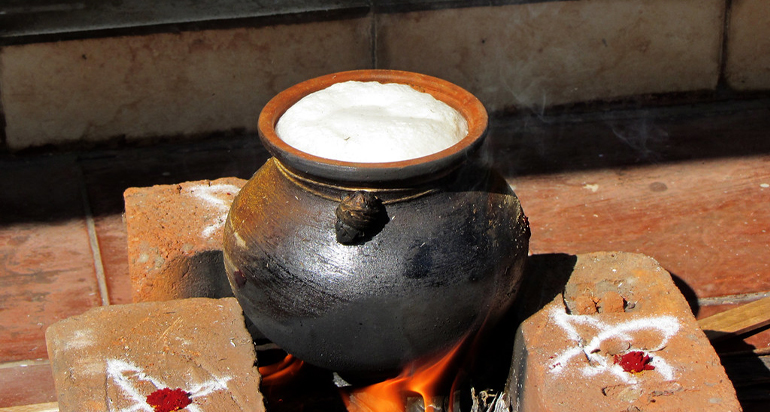Get Support
123-456-789-10
Story of Pongal Cultural Heritage From Day 1 to 4

With one of the world's oldest civilizations, Tamil Nadu boasts an incredibly rich cultural legacy. The celebration of Pongal begins on January 15. With copious enthusiasm and delectable feasts, millions of Tamilians will start celebrating Pongal. This four-day harvest festival, also known as the 'Tamizhar Thirunaal,' holds a special place in the hearts of the Tamil people, marking the bountiful harvest season and expressing gratitude to the Sun God for his benevolence.
Day 1 - Bhogi Pongal or Bhogi Pandigai
Bhogi Pandigai, or Bhogi Pongal, is the name given to the first day of the Pongal Festival in Tamil Nadu. On this day, which coincides with the end of the Tamil month of Marghazi, people gather and build bonfires out of wood and cow dung to burn unwanted household objects. To give their homes a festive appearance, people paint, clean, and decorate them with lovely items. People honor the god of rain, Lord Indra, on this day and pray for an abundance of rain in the upcoming year.
Day 2 - Thai Pongal or Surya Pongal
The primary celebration of the Pongal Festival takes place on the second day, which is referred to as the Surya Pongal or Thai Pongal. It is Makara Sankranti, a widely observed holiday in India, and the first day of the Tamil calendar month Thai. On Thai Pongal, residents use colorful Kolams to adorn the entryway of their homes and banana or mango leaves to decorate the exterior. Using freshly harvested rice grains, milk, and jaggery, a traditional clay pot is filled with a special sweet dish called "Pongal." The food is allowed to boil and spill out of the pot, signifying their wish for better luck in the coming year. Usually, a flower garland or turmeric plant is tied to the pot, which is then presented to the sun for decoration.
Day 3 - Mattu Pongal
Mattu Pongal, observed on the third day, honors cows and their sanctity. On this day, cats are revered, have their horns painted, and are adorned with flower garlands, bells, and other decorations. They also serve special feasts. For Tamil Hindus, cattle are considered wealth sources since they provide dairy products, fertilizer, transportation, and agricultural support. On this day, there are numerous cultural events and cattle races like "Jallikattu."
Day 4 - Kaanum Pongal
Kaanum Pongal, also called Kanya Pongal, marks the end of the Pongal Festival. On this day, ladies and young girls pray for their brothers' well-being and engage in a unique ceremony known as "Kanu Pidi." By this custom, they scatter a turmeric leaf in their home's courtyard and feed the birds, particularly the crows, the leftover "Pongal" dish from Surya Pongal.
In conclusion, Pongal is not just a festival; it is a reflection of the rich cultural heritage and agrarian traditions that define Tamil Nadu. It fosters a sense of unity, gratitude, and community spirit. As families gather, pots bubble with the aroma of Pongal, and the sounds of laughter and joy fill the air, one can't help but be captivated by the beauty and significance of this harvest celebration. Pongal, with its traditions and festivities, truly embodies the spirit of abundance and unity.


 By: admin
By: admin